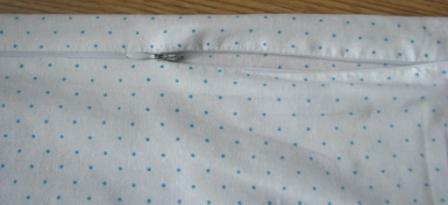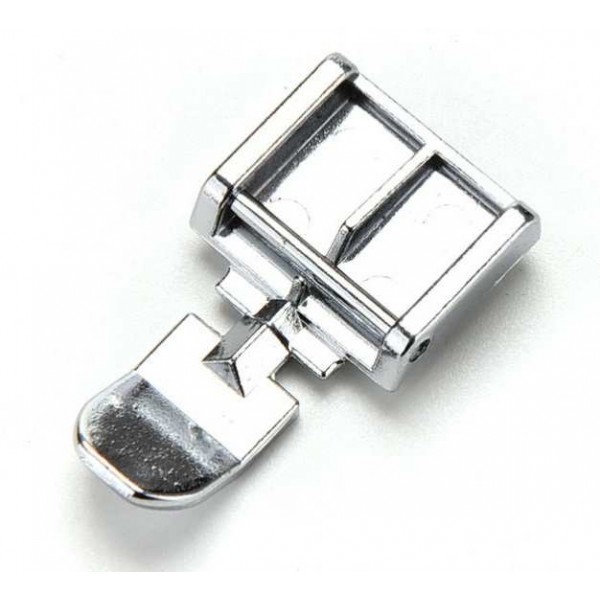A duvet cover with a zipper, although not easy to put on a blanket, is much more convenient to use. The blanket does not fall out, the buttons do not come off and do not pinch. But such duvet covers are rarely found on sale, so there is only one way out - to sew a zipper into it yourself. Let's find out how to do it correctly.

What type of zipper is better to choose for duvet covers?
Bedding needs a zipper that will last a long time and be easy to use. Of course, all zippers are convenient, but each type has its own characteristics.
Metal is not suitable due to possible jamming and the risk of teeth falling out. Although it is durable, if a tooth is lost, it will have to be completely replaced. For the same reason, the tractor type is not suitable.

The most suitable option is a spiral zipper. It is impossible to lose teeth unless you damage them mechanically. It works without jamming, and if the slider breaks, it can be easily replaced without changing the entire fastener.A hidden fastener is also suitable for a duvet cover, but it is more often used for children's bedding, and it is much more difficult to work with.
The zipper for bed linen should be:
- one-piece;
- spiral;
- 2–3 cm longer than the duvet cover slot;
- match the color of the bedding;
- size No3 is the most successful option when the dog is almost invisible, but is easy to find and pick up;
- preferably with a metal slider.
IMPORTANT! There are special linen runners. Their peculiarity is the absence of a keychain. This slider can be purchased separately from the clasp or together with it.
Materials you will need for work
In fact, you need no more materials than for sewing the duvet cover itself, with the exception of the fastener itself. Namely:
- lightning;
- sewing machine;
- threads;
- chalk or pencil for marking;
- ruler - for marking;
- foot on a sewing machine for attaching a zipper. A standard wide presser foot will not work because the teeth will get in the way.
IMPORTANT! To sew a hidden fastener you need a special foot. You can do without it, but then you won’t be able to properly sew the lock on the bottom of the duvet cover. This is due to the fact that with a countersunk one, the teeth point inward, unlike the usual one, and they need to be bent as much as possible.

Instructions on how to sew a zipper into a duvet cover
The peculiarity of sewing a zipper to a ready-made, purchased or homemade duvet cover is that it has an edge - a folded, processed edge. That is, it turns out that at the edge of the slot the fabric is folded in two, sometimes its width is greater than the fastener braid.

If you simply stitch the fastener to this edge, then on the front side, near the fastener itself, a sealed edge will be visible.You can leave it this way, but if you are a perfectionist or are simply used to doing everything perfectly, there is a way out for you too. You will learn about it from the instructions for sewing a zipper into a finished duvet cover:
- spread the duvet cover 4-5 cm on each side of the slit, and put fasteners so that the seam does not unravel further;
- put marks where the fastener will begin and end;
- Unzip. It can only be sharpened when opened;
- attach the clasp to the front of the slot. If it is ordinary, spiral, apply it with the teeth to the front part of the duvet cover. If you are sewing a hidden one, the teeth are on the inside of the duvet cover. Apply hidden teeth to the front side;
IMPORTANT! If the edge is too wide, apply the teeth of the fastener to the edge. It turns out that part of the duvet cover will protrude beyond the width of the fastener tape.
- baste the fastener to the duvet cover;
- make a fastening by laying a small line in the opposite direction;
- If the fastener is hidden, unscrew the links as much as possible and sew a stitch near the link. In this case, a special foot will itself turn away the links in order to get as close to the edge as possible. If the zipper is a regular one, you don’t need to unscrew anything, just lay the stitch close to the teeth;
- Having reached the end of the fastener, move the slider up along the already sewn part. This way he won’t interfere with finishing the line;
- at the end, make a tack and remove the basting;
- do this with the other side;
IMPORTANT! In order to sew the zipper to the second side of the duvet cover, you will need to turn it inside out.
- in the inside-out state, sew up the loose seams of the slit up to the marks and attach the fasteners to the fastener.
Now you know how to sew a zipper into a duvet cover. This method is suitable for pillowcases and other covers.And remember that it doesn’t always work out perfectly the first time; mastery comes with practice.


 0
0





